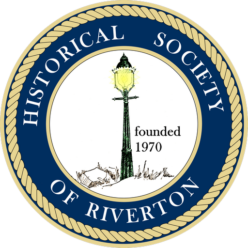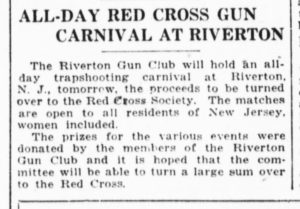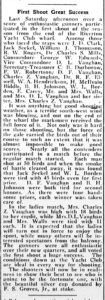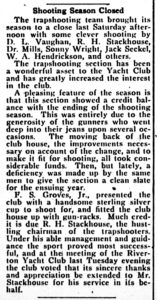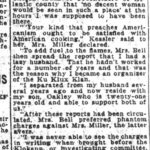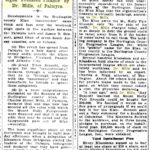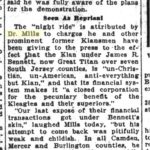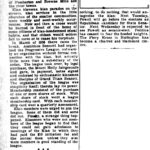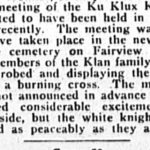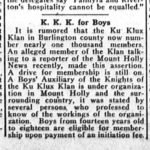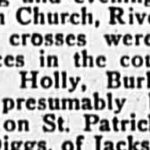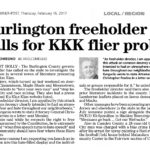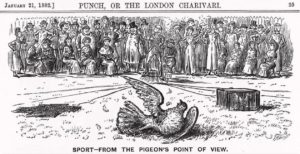
Sometimes, when researching Riverton’s history, we encounter a dark chapter.
The troubling part of the story below is not about the now illegal live-bird shooting competitions once held by Riverton Gun Club. It is rather about the tragic outcomes for two participating sharpshooters and the racist viewpoints of another.
Here is how another regular foray down the research rabbit hole led to some unsettling findings.

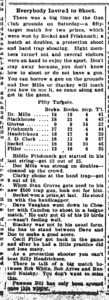
While working on the recent article about the acclaimed or infamous, depending on your viewpoint, Riverton Gun Club, I found a news clipping with a date that was a good deal after a 1906 court case that outlawed live bird shooting caused the club to disband in 1907 and sent it to Borough Historian, Roger Prichard with a question.
Rog – Have you come across accounts of shooting competitions at the Yacht Club? They are billed as Riverton Gun Club contests, but the original one was disbanded in 1906/1907. Might be something to write about. -John
Roger’s reply sent me off on another tangent to search for more evidence of Riverton Gun Club 2.0. His detailed reply follows below.

John – Yes, this was the reason they moved the clubhouse back from the river (from the outer island to the middle island) in the Fall of 1920, so the shooting from the clubhouse would be more challenging. You’re right, I’m sure, that there was no formal connection with the old gun club except that the members were from some of the same families.
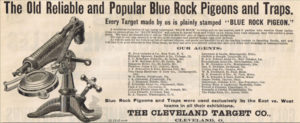
The targets for these shoots were not live pigeons, as the Riverton Gun Club killed by the hundreds, but clay targets launched mechanically from the pier over the river.

This 1906 news snippet is the first clue that enthusiasm for target shooting remained after the demise of the Riverton Gun Club.
By 1908, news reports told of the exploits of a group using the name Riverton Gun Club holding trap shooting matches. One contest was away in Haddonfield, but the report for the other against a Philadelphia team did not explain where the match took place in Riverton.
Another competition against a Merchantville club in March 1909 also occurred at an unknown location in Riverton. Names on the scoresheets included Fitler, Biddle, Thomas, and Stewart, also family names from the original club.
David H. Wright, who abhorred live bird shoots and fought for laws to stop them, had already bought the 23-acre gun club grounds and handsome clubhouse for $6,000 in May 1907, so it is unlikely that any gunning took place on his property.
By November 1911, Wright placed ads asking to sell the gun club grounds for $20,000.
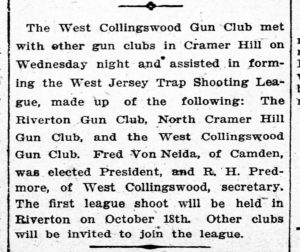
The Riverton Gun Club, North Cramer Hill Gun Club, and the West Collingswood Gun Club allied to form the West Jersey Trap Shooting League in August 1913. They held the first league shoot in Riverton on October 18, but where is unclear.
Interestingly, the publicity for the next month’s contest in Camden reminded readers that the West Jersey Trap Shooting League had united three sporting clubs, but for the first time, it listed the Riverton contingent as Riverton Yacht Club, not Riverton Gun Club.
In January 1914, the newspaper returned to referencing the Riverton Gun Club as it explained that the West Jersey Trap Shooting League planned three shoots, one in January at Riverton, one in February at Camden, and another in March at West Collingswood.
The Riverton Gun Club roster for a November 1914 match included Biddle, Mills, Purnell, Keating, Vaughn, Seckel, Reed, Frishmuth, Kimbel, Hendrickson, Chambers, Jones, Thomason, Alexander, and Hill.
And in April 1915, we’re back to calling the shooters The Riverton Yacht Club. The smaller roster includes Vaughn, Evans, Keating, Allen, Stackhouse, Mills, Reese, Frishmuth, Reinhard, Chambers, Toner, and Hills.
The December 1915 reporting inexplicably returns to naming the marksmen of the Riverton Yacht Club. Some Riverton players continued, new ones joined, and others returned after an absence, but it is the same core group of men.
In practical terms, the two club names had become synonymous.
Accounts of trapshooting competitions involving the Riverton Yacht Club, the Riverton Gun Club, or simply just Riverton persisted for several years.
Starting with accounts from February 7, 1919, we no longer see any mention of the West Jersey Trap Shooting League. And except for the April 22, 1921 Palmyra/Riverton shoot, the remaining publicity from Jan 1919-May 6, 1921 appears only to list Riverton sportsmen.
Several reports make it clear that the events took place on the pier or wharf of Riverton Yacht Club.
If only we had a photo of one of those contests!
The confusion over the locations of some of the trapshooting matches remains. The matches appear to have died out less than a year after all the fuss to move the clubhouse back on the pier.
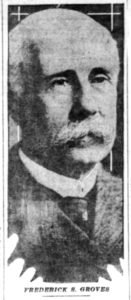
Regular readers of this column may recognize the name F. S. Groves because of our unsuccessful efforts these past months to save the Groves Mansion from demolition.
Names, such as Frishmuth, Biddle, and Fitler, have often been central to other Riverton historical sagas.
Having more familiarity with those names than I do, Roger shared some sad information about two of these players and a disturbing story about another.
That clip (referring to the March 7, 1919 New Era clipping that set us off) also has names with a ton of awful connections.
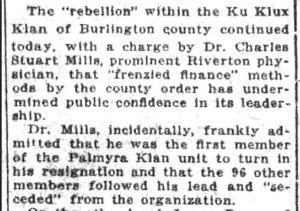
“Dr. Mills” was the Charles Street Mills who lived in the Furness house at 106 Lippincott for decades and was the chairman or something of the Palmyra chapter of the Ku Klux Klan. Nancy Hall said her father detested him. She said he had a sign on his desk that read “Great Doctor. Helluva man.”
Dr. Mills’ involvement in Klan activities came to light in 1926-1927 during an internal dispute over the mismanagement of funds within the organization.
Lest you think that the Klan was not a thing here…
Despite having great wealth and status, these two tragic figures took their own lives.


Frederick Stanley Groves Jr., the son of Frederick S. Groves Sr., grew up in the Groves Mansion and, around this time, built himself and his wife (the daughter of Arthur Dorrance) the phenomenal house and grounds where the Cinnaminson High School is now.
Terrible that it mentions his “new $500 trap gun” since he later shot himself to death (1931). He was a big game hunter.
Even worse was “Biddle” Frishmuth (I’m sure Robert Biddle Frishmuth 1889-1923). He was also a suicide, just 4 years later (than the March 7, 1919 article at the beginning)
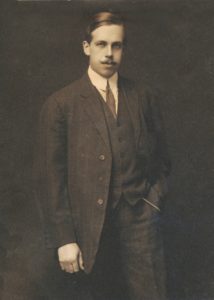
The clipping I found… said – incredibly considering your New Era clipping – that “The shotgun that Mr. Frishmuth used to end his life was the “pet gun” with which he had won many trophies at trapshooting.”
R
It’s not all good news at rivertonhistory.com. -JMc
